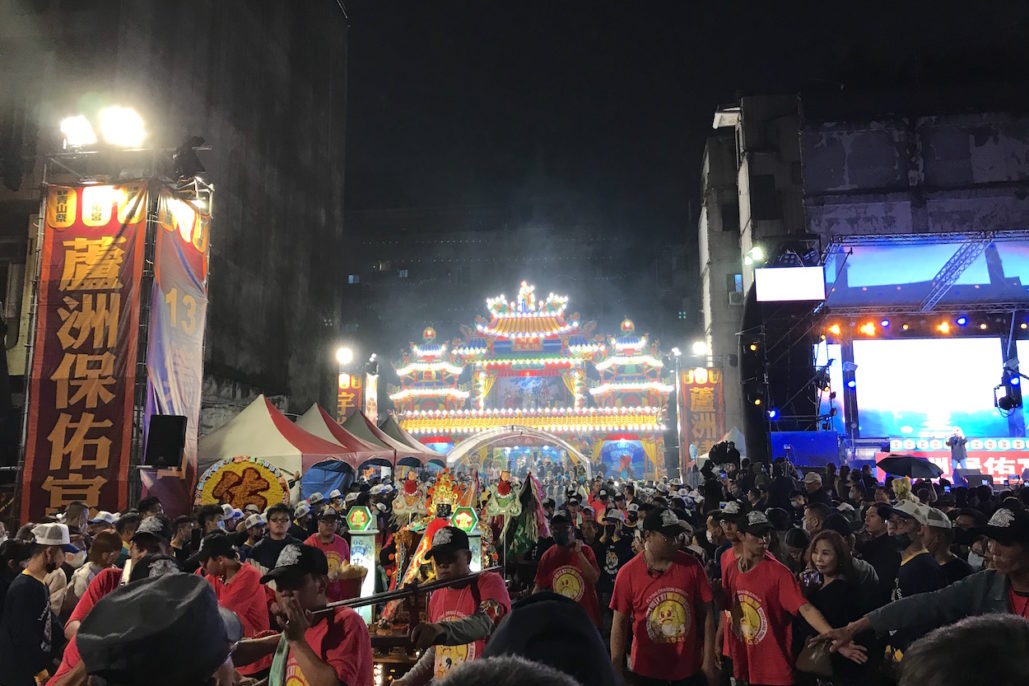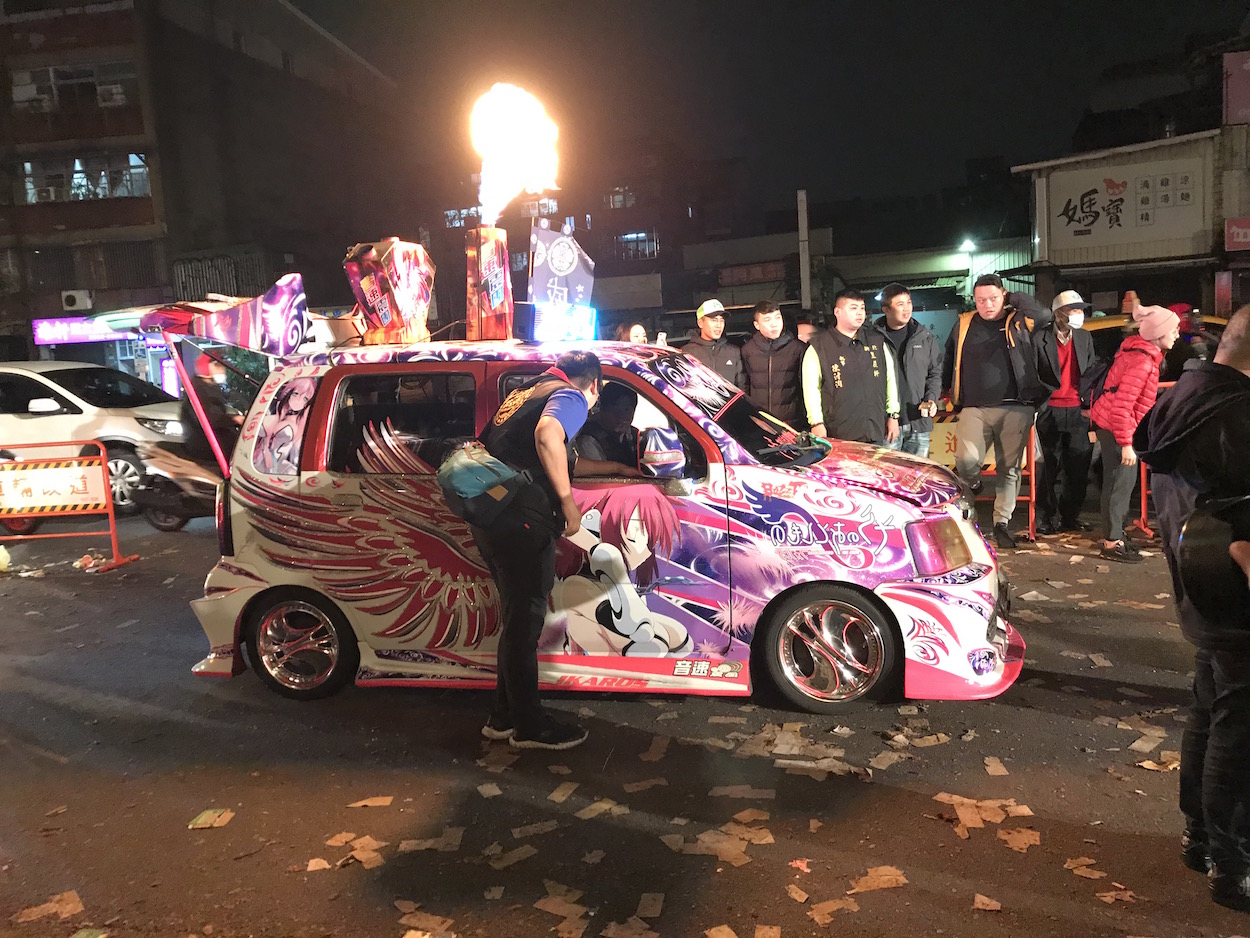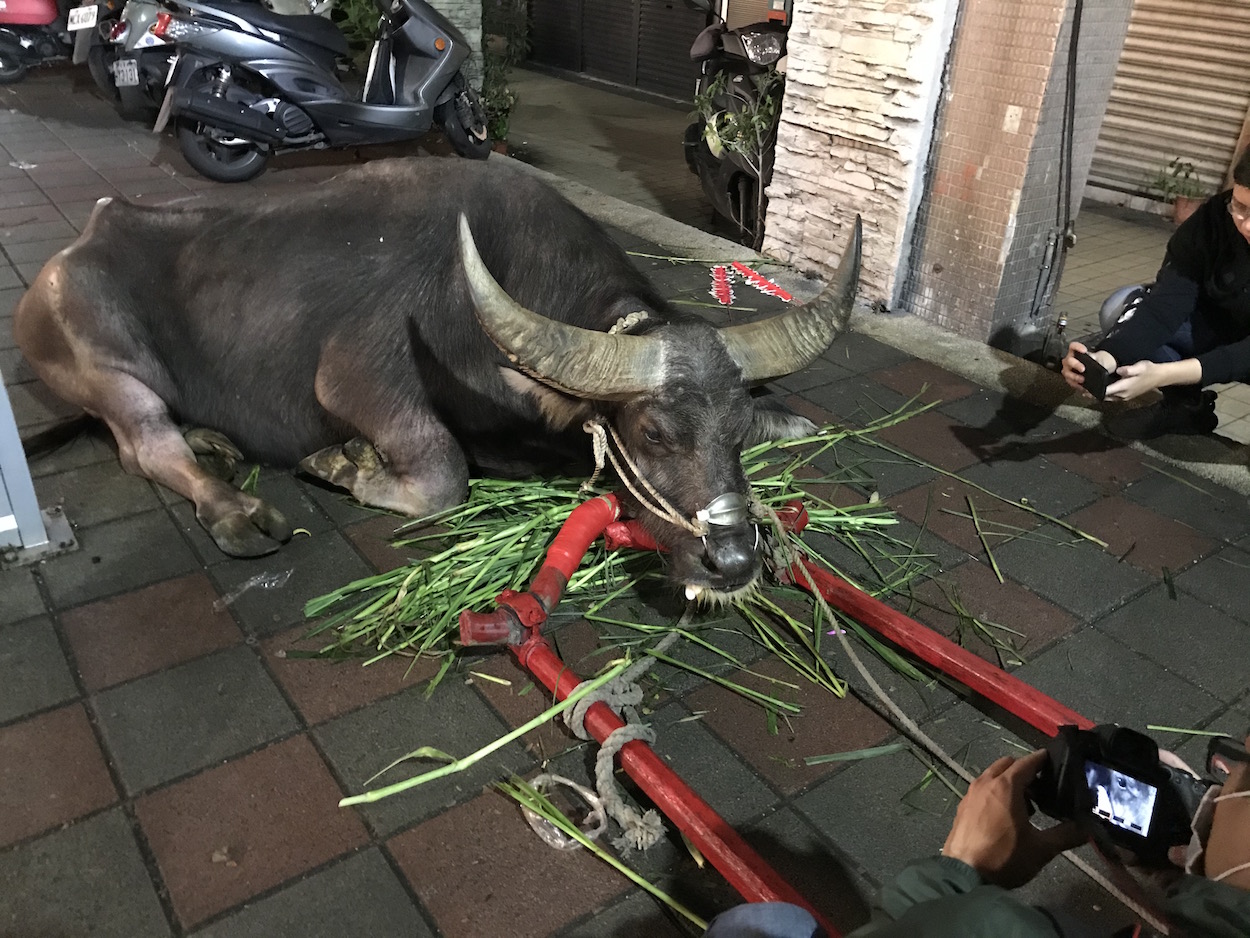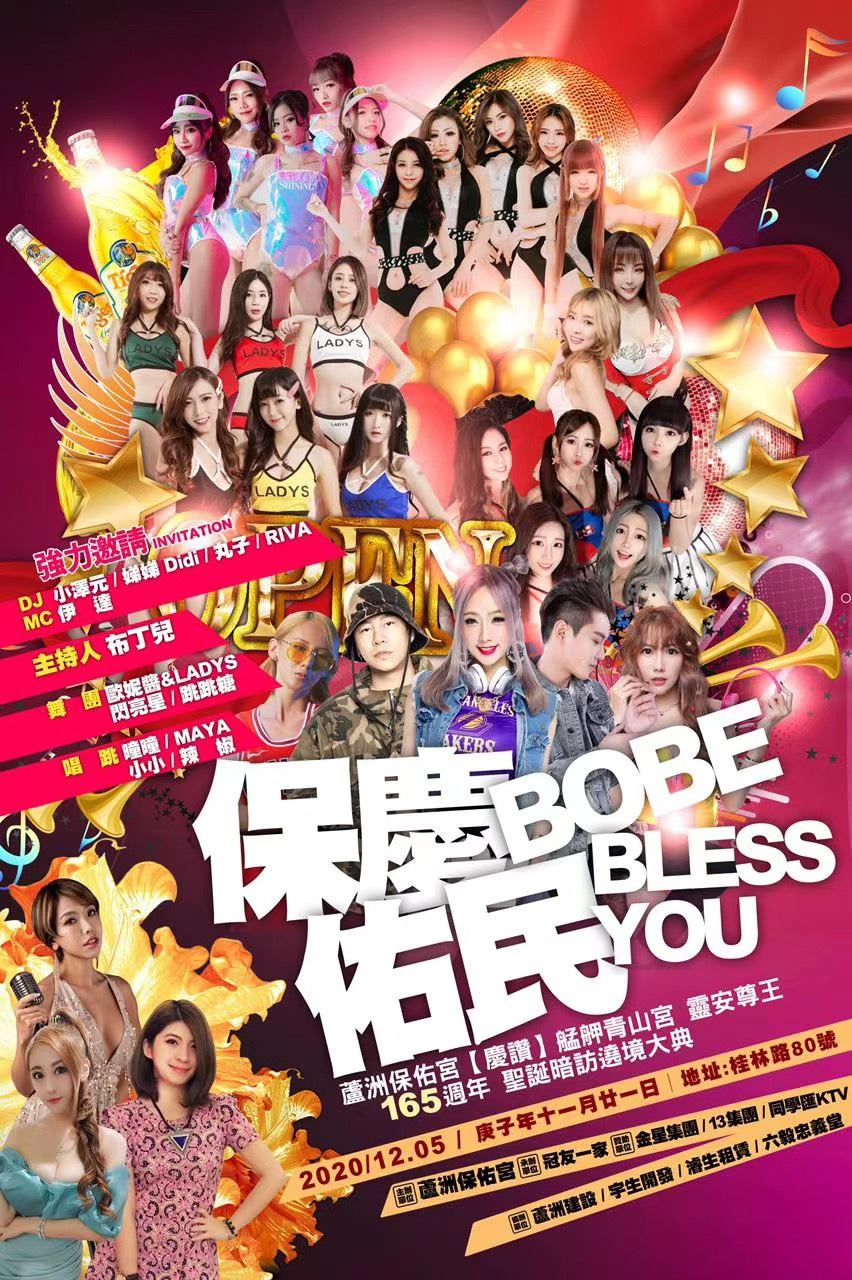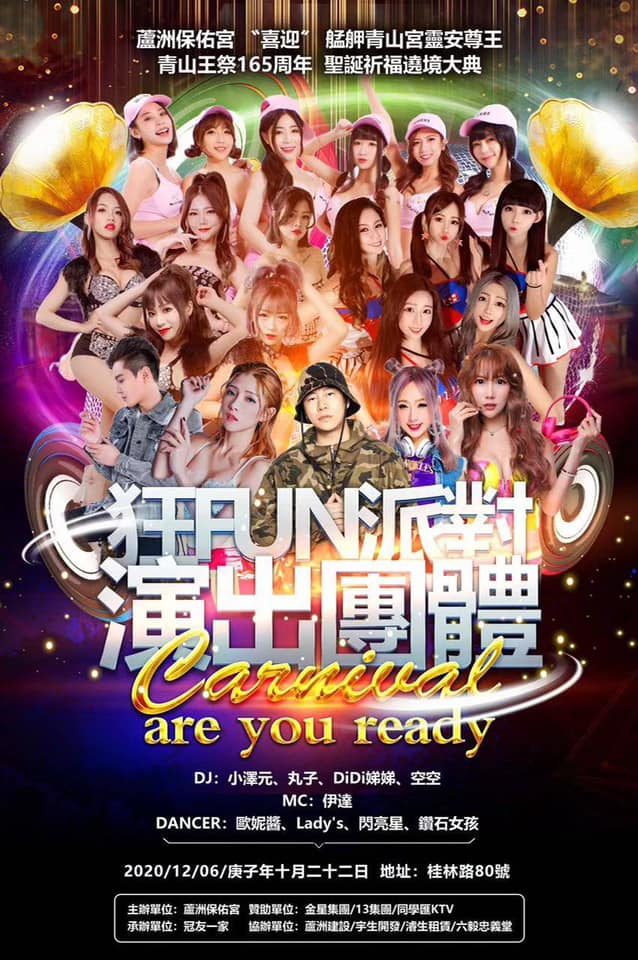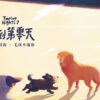by Brian Hioe
語言:
English
Photo Credit: Brian Hioe
THE FIRST HINT that something big would be taking place in Bangka (萬華) over the weekend was when a large stage was set up on the street of my apartment building and started blaring loud electronic music every day at 11 AM.
Some of what was playing was incredibly bizarre. I heard a trance remix of Old Wang Band (老王樂團), for example, the folksy indie rock band. Why would anyone have thought to remix the song as trance? Seeing as I could see very little overlap between fans of Old Wang and trance listeners, who would be the target audience for this remix, much less who would it be that did the remixing and felt that this was something that the world needed to see brought into being? Something like a shrine was set up next to it, with rotating animated figures looking something like “It’s a Small World”, the Disneyland attraction.
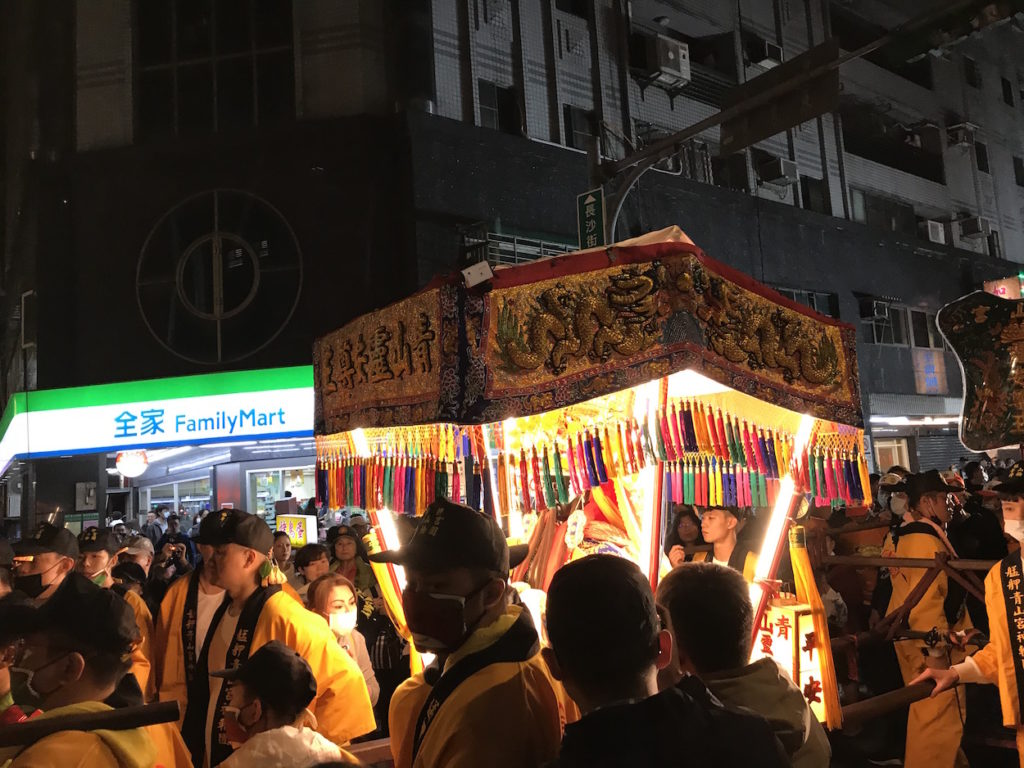
King Tsingshan himself, passing by in a palanquin. Photo credit: Brian Hioe
Gradually, small stages began to appear across Bangka. Next to the Laosong Elementary School (老松國小), by various shrines in the area, other places. Some storefronts were rented out and turned into small shrines. These were usually shrines and temples from out of town that had come in for the festival. None were quite as large as the stage by my apartment. The term for these kinds of temporary shrines is “red altar” (紅壇).
It was the King Tsingshan Festival (青山王祭), one of Taipei’s largest temple festivals, which takes place during the tenth month of the Lunar Calendar every year to commemorate the birthday of the god King Tsingshan (青山王祭). In past years, activist turned politician Freddy Lim (林昶佐), the frontman of symphonic black metal band Chthonic (閃靈), had taken to organizing an indie rock festival in the area to mark the occasion. He seemed to be hoping to get young people interested in traditional culture that way. The festival took place across three days, from Friday until Saturday.
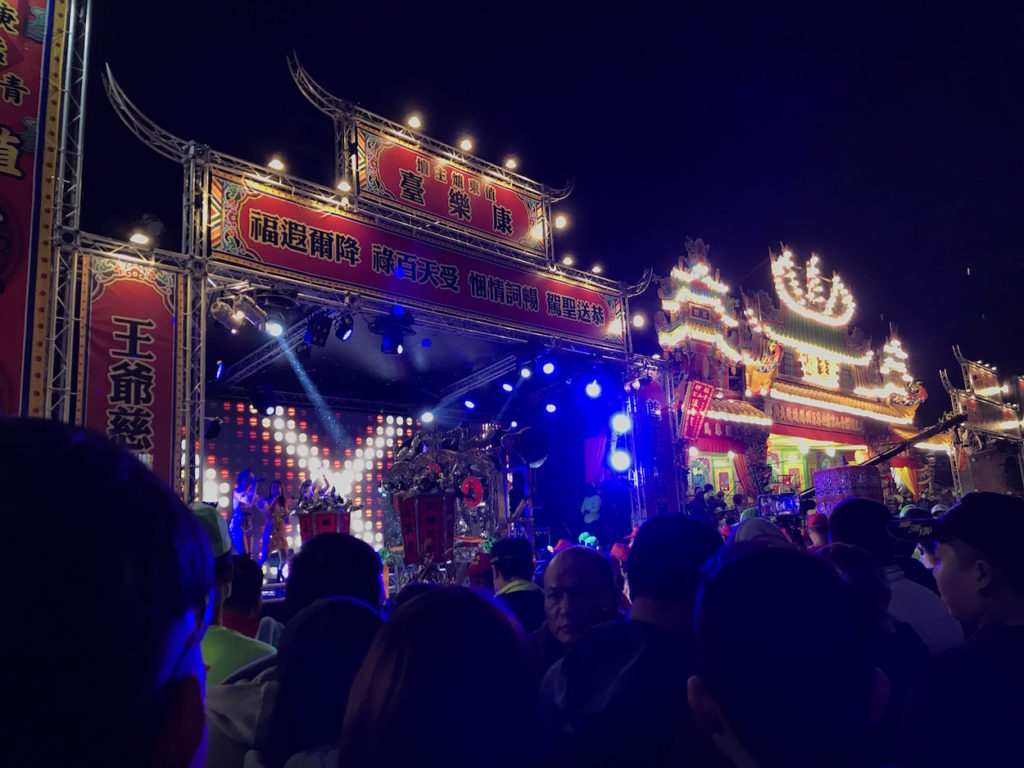
Photo credit: Brian Hioe
This year, the indie rock festival still took place, but not under the direct auspices of Lim. I went and checked out some performances. I heard Enno Cheng (鄭宜農) and Bisiugroup (美秀團) play for the first time, but didn’t get to hear Lilium (百合花樂團), which I’ve wanted to hear for a while. Somehow, whenever they have a free show, I end up being busy.
On Friday, the first day, the stage on my street blasted music, but I didn’t see any attendees. I wondered at this happening rave with no attendees. Was the music only there for the gods to listen to?
By the second day, on Saturday, it was full of people. I was woken again by electronic music at 11 AM. By 3 PM, firecrackers started going off constantly. The sound of firecrackers and the noise from the bass was loud enough that the floor of my apartment shook. I had actually been out until 5 AM at a club the night before, so I would have preferred to sleep some more, but the noise forced me awake. It quieted by 10 PM, though.
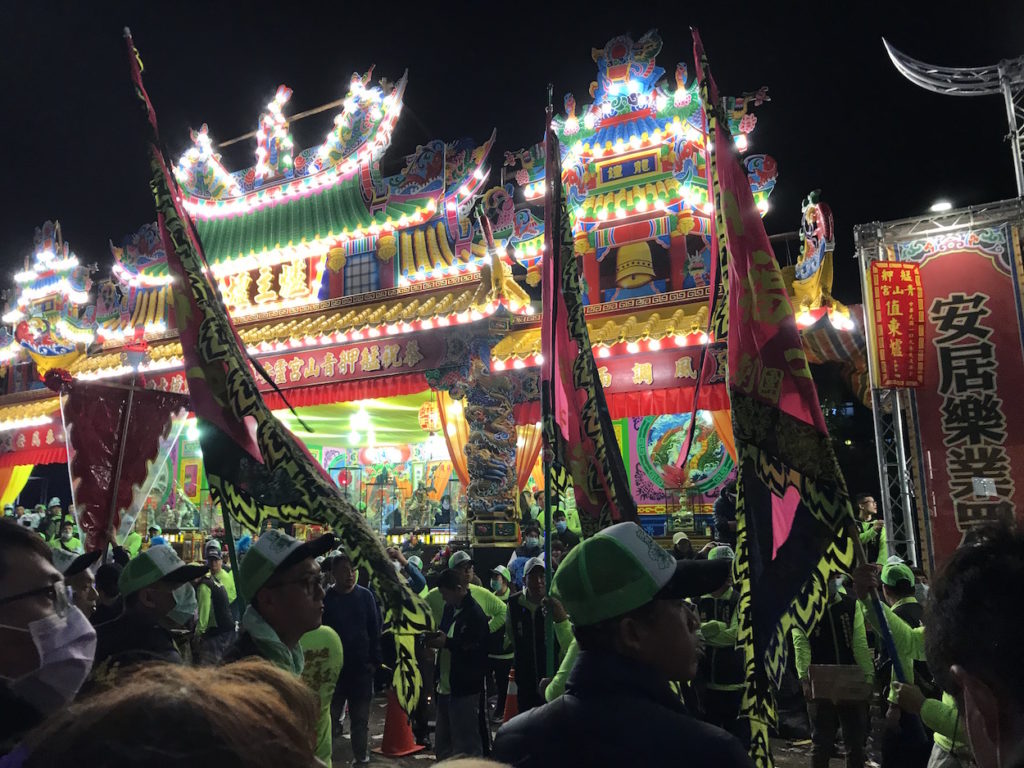
Photo credit: Brian Hioe
For whatever reason, it was the last day—Sunday night—that was the largest. That night, they went all the way until 5 AM. It’s funny that the last night was the most festive, because it’s the first two nights that are known for the “Secret Night Patrol” (暗訪)—a ritual that involves the statue of King Tsingshan from the Tsingshan Temple being carried in a palanquin through Bangka until dawn.
Though in the past, this involved firing fireworks constantly, noise complaints have reduced this. Now, King Tsingshan just roves the night while speakers blast his theme song behind him—they even specially commissioned a theme song just for this year’s festival! A GPS tracker is attached to the palanquin, so you can track where he is during the night through a specially designed app, and there’s a live stream, too. A screen was set up at the Tsingshan Temple (青山宮) to watch the live stream.
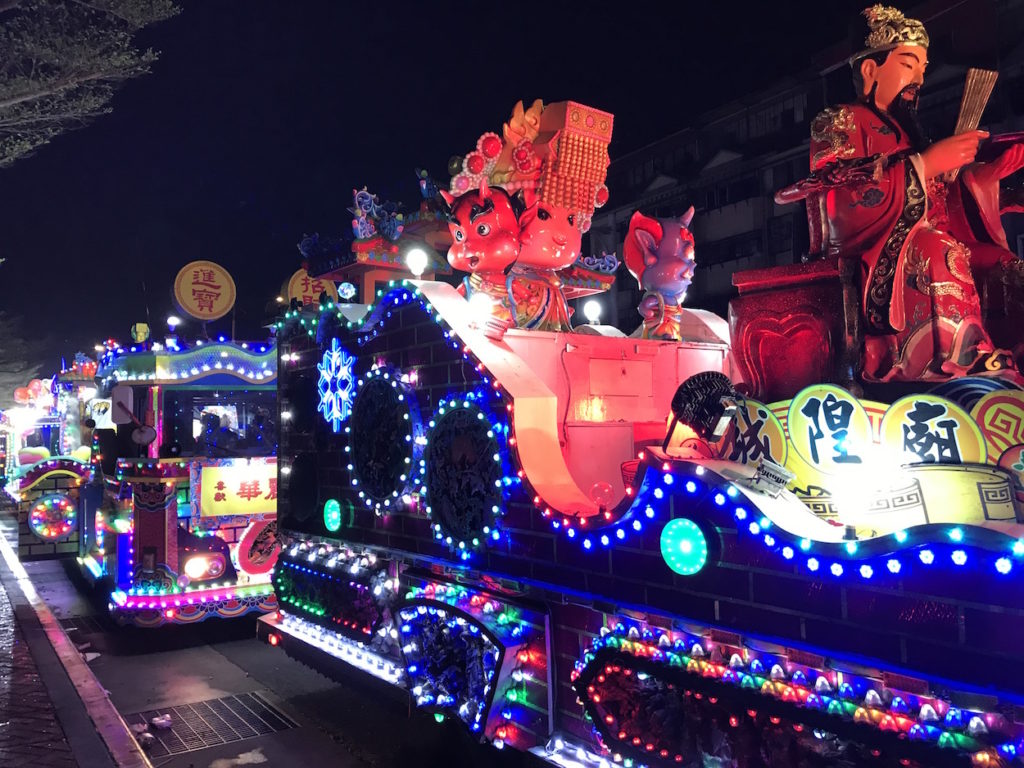
Photo credit: Brian Hioe
Indeed, what really jumps out about the King Tsingshan Festival is the merger of tradition and modernity. Most stages in the area had stages set up for DJs next to a temporary shrine. DJs would blast electronic music—usually a mixture of genres, but the kind of working-class “taike” (台客) techno you rarely hear in Taipei nightclubs, mainstream or underground. Scantily clad female dancers take to the stage periodically, much as you might see in mainstream nightclubs. Based on some of their stage performances that I saw, I’m guessing that some of these dancers also work in mainstream clubs, since their dance moves seem drawn from the mainstream club repertoire, although some may specialize in temple festivals.
Otherwise, you might see some performances by singers or rappers. In the streets, you’d have traditional gods and deities such as the Holy Generals (神將), or Eight Infernal Generals (八家將) strolling about. The Holy Generals tend to stand out in particular, being around three meters tall, while you’ll see the Eight Infernal Generals perform martial arts. Next to them are cars and floats covered with neon lights. I saw a Japanese-style itasha car, decorated with the character of a large anime character, that billowed flame from the top at one point. I also ran into a water buffalo randomly on the streets with its owner.
Itasha car (top) and water buffalo (bottom). Photo credit: Brian Hioe
The juxtaposition could be quite odd. The stage across from my apartment saw no coordination whatsoever between the DJ stage and the temple stage next to it, resulting in moments in which the MC for the temple stage would be giving a long monologue explaining the details of temple costumes and at a loud enough volume that this drowned out the singing going on from the stage next to it. At another point, there was the very strange juxtaposition of a group of young women dancing dressed in schoolgirl uniforms while the MC was lecturing on efforts by the temple to assist the homeless.
There was one older man who I saw dancing on the stage next to the Laosong Elementary School for the entirety of the Saturday and Sunday festivities. He was quite good at dancing, but I was never sure whether he was part of the formal dance troupe or not. He came up to my group of friends, shirtless, and at one point and tried to get us to dance. I wasn’t too in the mood, but I appreciated the gesture.
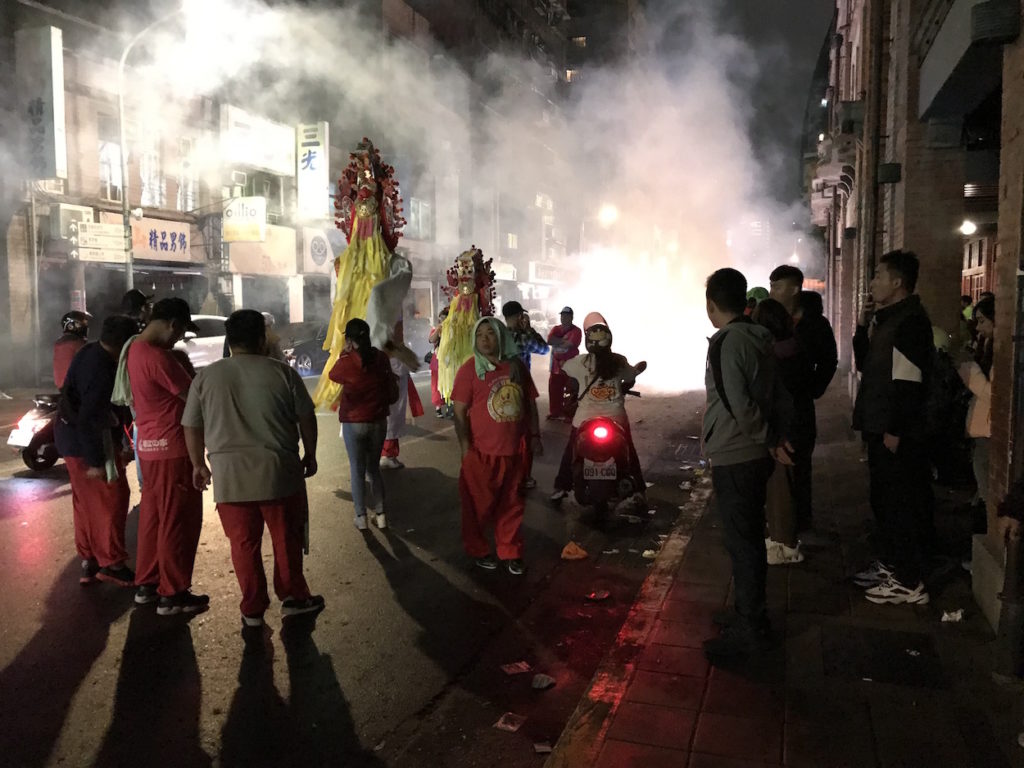
Photo credit: Brian Hioe
Part of what really strikes is the sexualization of temple culture in Taiwan—invariably, regarding the objectification of women. Temple culture is very male in terms of participants and it is sometimes thought of as associated with organized crime. Indeed, some of the larger stages in the area seemed to have funding from some groups involved in sectors linked to organized crime, such as the construction industry. Police sometimes were gathered by stages in large numbers, as though they expected something to potentially happen.
Another thing Taiwan is known for, in terms of temple culture, is having strippers at temple festivities and even funerals. It’s an odd mixture of the sacred and profane, oftentimes. Same with the incorporation of electronic music culture into temple culture.
Actual advertisement for the temple festival by the Bobee Temple in Luzhou. Photo credit: 蘆洲保佑宮/Facebook
It wasn’t very clear to me what purpose this served. Was this an attempt to get young people to participate in temple culture, by incorporating elements of nightlife? Because this was what old people wanted to see? A lot of the people that attended temple festivities of these sorts were just old men, who may have been there to gawk at young women, but also quite often just stared blankly at whatever was going on.
Another explanation is that young temple performers themselves started to incorporate their personal interests—such as clubbing—into temple culture. This was how Taiwan ended up with the phenomenon of the Electric-Techno Neon Gods (電子三太子), for example, because temple performers that liked clubbing started to incorporate electronic music into traditional temple dances.
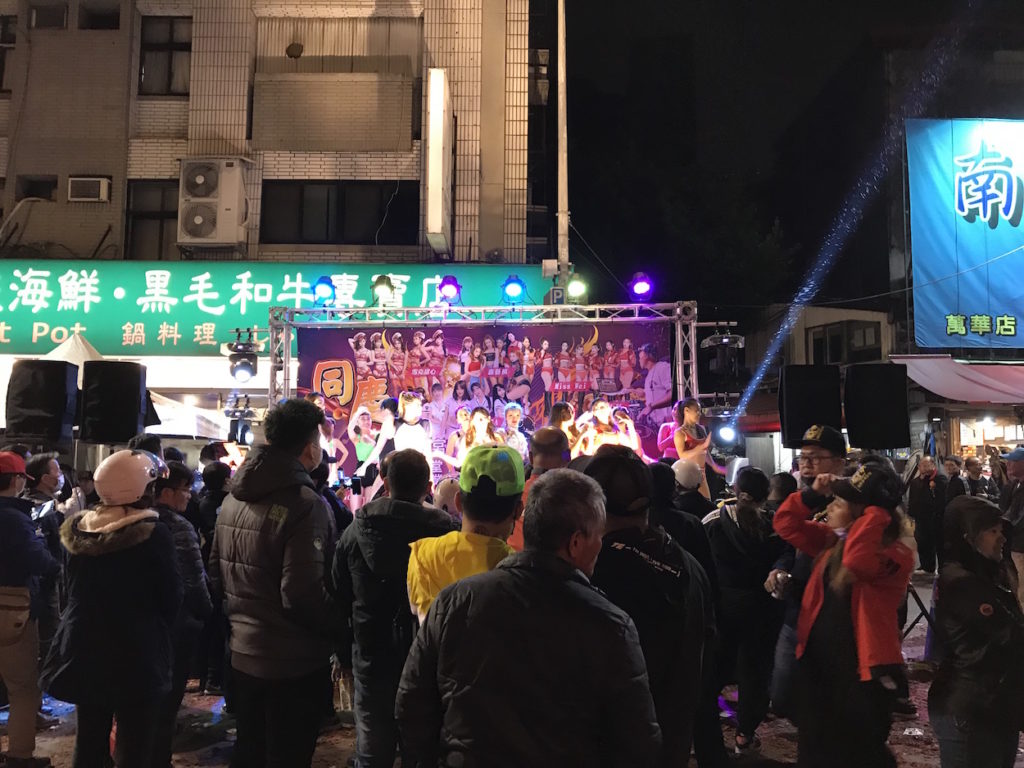
Photo credit: Brian Hioe
The aural elements of the temple festivities were quite striking—with very different aural registers all overlapping onto each other at once. The sounds of drums, horns, firecrackers, electronic dance music, pop ballads, hip hop, indie rock, all layered on top of one another. I found it rather amazing.
An academic friend that I wandered around with on Sunday night commented that temples in Taiwan had proved very adaptable in incorporating elements of modernity into tradition—like applying neon lights to the traditional costumes of gods, or putting a GPS on a god’s palanquin. He speculated this might be because temple culture had always been considered as disrespectful in nature—as a result, temple culture never became anything like a sanctified, official culture, and could be open to incorporating flashy technological elements or this large degree of sexuality.
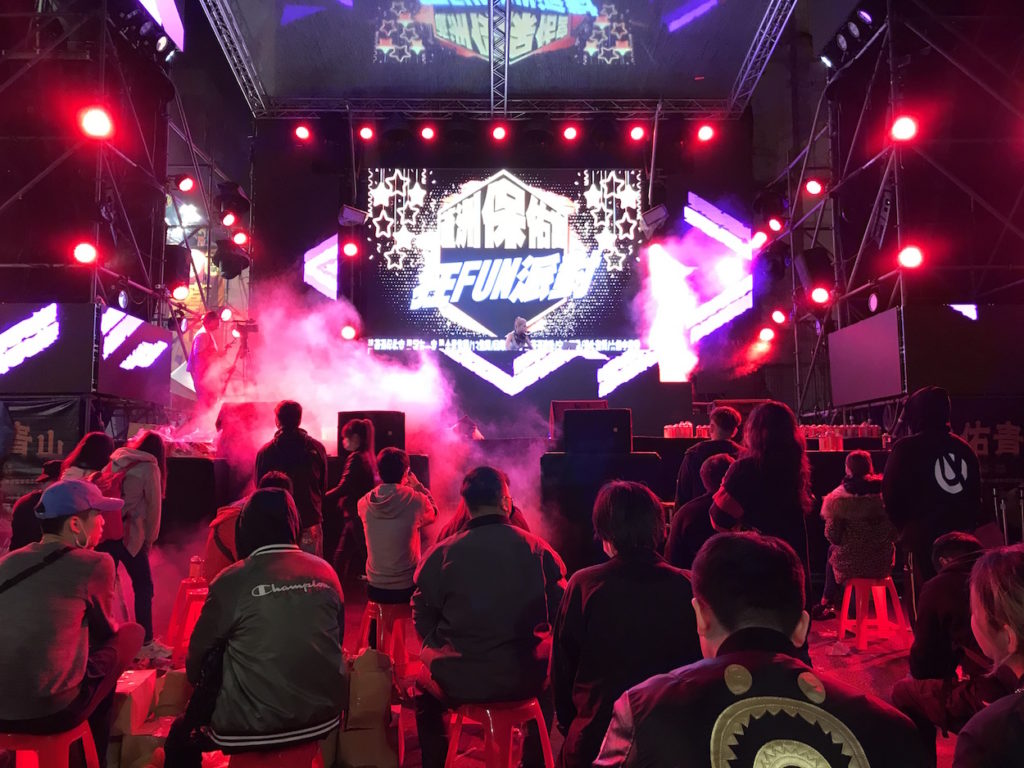
Photo credit: Brian Hioe
On the positive side, the sexualization of temple culture also strikes as perhaps indicative of a sexually liberal attitude in society. I even wonder if that was a factor in why Taiwan was open to legalizing gay marriage, as the first country to do so in Asia. Perhaps eventually it won’t be just so straight male in orientation and we’ll have queer temple festivals, too. Bangka is just a stone’s throw from the gay-friendly district of Ximending, after all.
The weekend and all the temple festivities all just seem like an odd dream, in retrospect. The next day, the street in front of my house was stained black and red ash from all the firecrackers. No idea how they’ll clean that up. Given all the noise complaints over the weekend, there’s a lot of social discussion of temple festivities as a clash between tradition and modernity now. One fire, which was attributed to possibly having been caused by fireworks, broke out at 7 AM on Monday morning. But a part of me misses waking up to the sound of booming electronic music and firecrackers every day now.
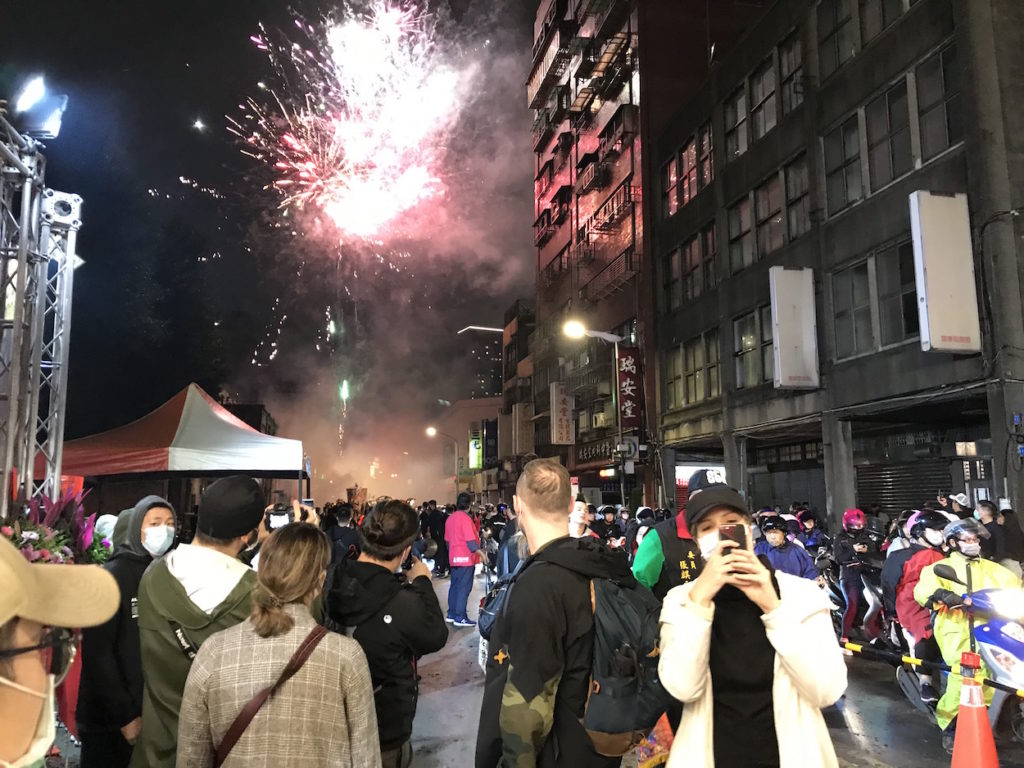
Photo credit: Brian Hioe
According to statistics from the police, over 100,000 attended the festival. This was the largest ever King Tsingshan Festival, seeing as it was the 165th anniversary since the festival began to be held. That kind of thing isn’t really possible elsewhere at present, given COVID-19 and all. With Taiwan having had less than 700 cases and only seven deaths, Taiwan never needed to go into lockdown. In retrospect, I thought it was a bit auspicious—King Tsingshan is worshipped as a deity that saved the people from a plague that struck Taipei in the 19th century.


